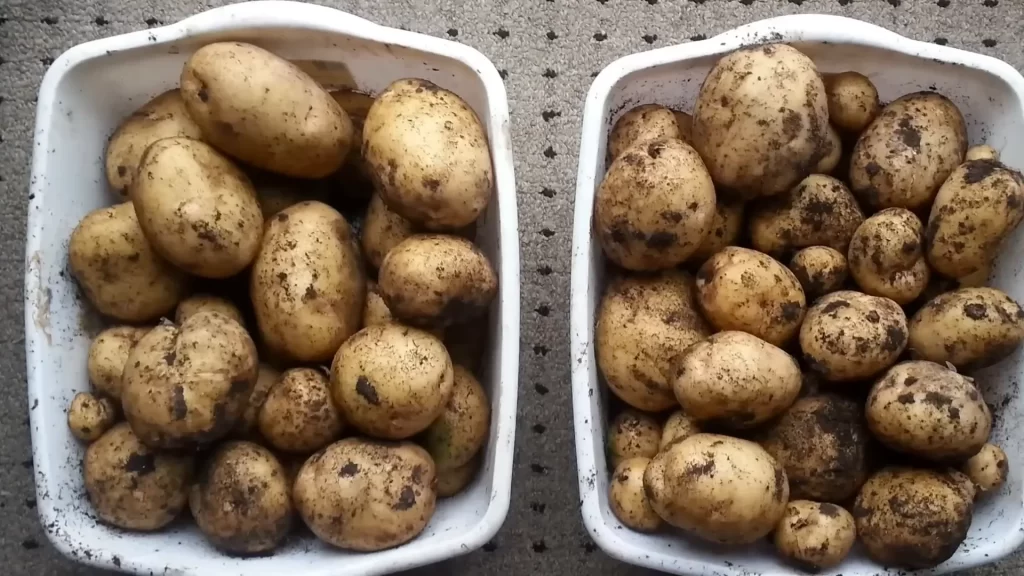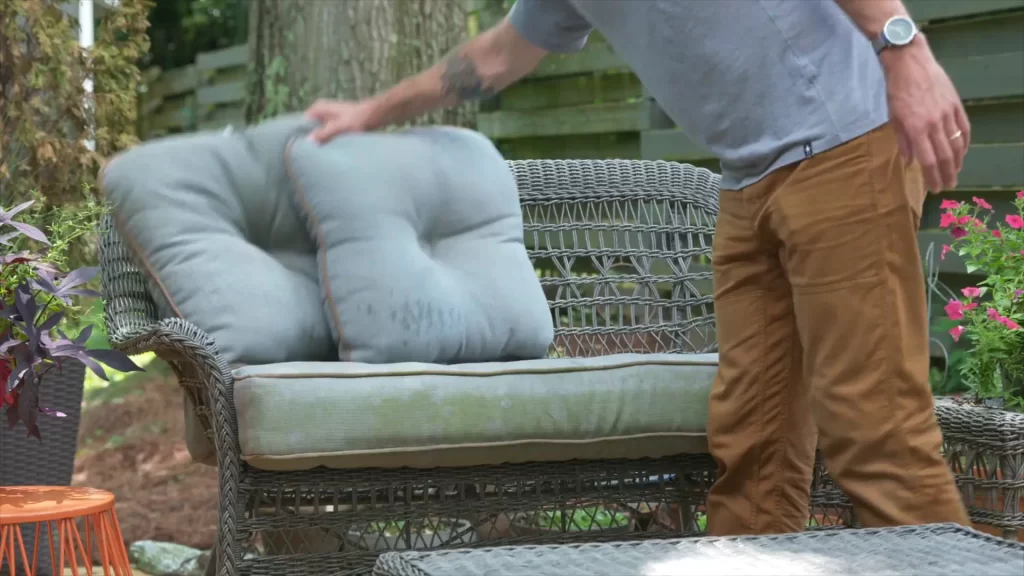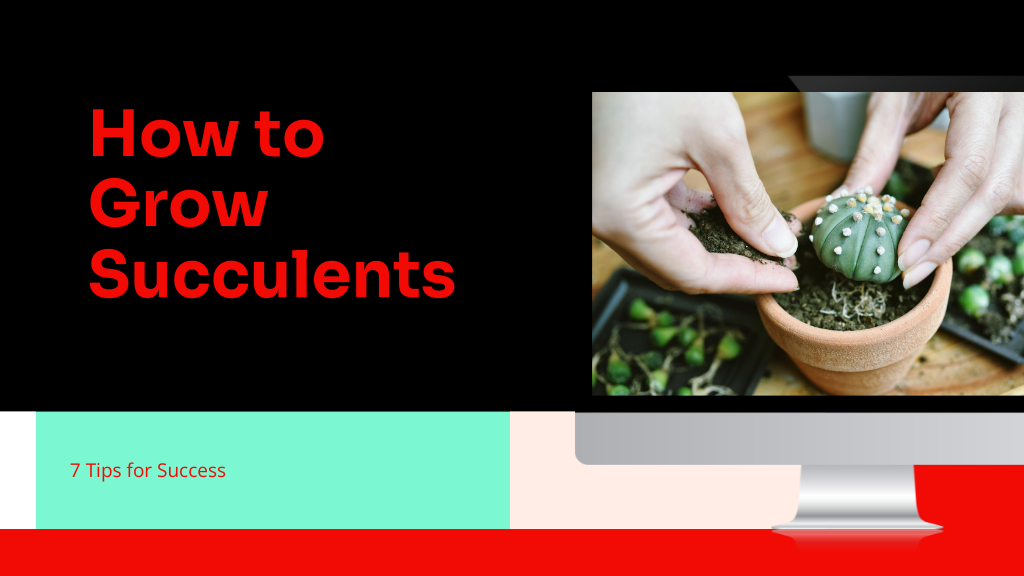
To master how to grow succulents, you’ll need to follow a few essential care tips. First, only water when the top half-inch of soil is dry; succulents prefer less rather than more water. Use well-draining soil mixed with grit or fine gravel to prevent soggy roots, which can lead to rot. Succulents thrive in bright, indirect sunlight, ideally for 6-7 hours a day, and should be kept within a temperature range of 70-90°F. During their active growth season, succulents require minimal watering compared to other plants. Fertilize lightly with a diluted, balanced fertilizer to help varieties like sempervivums flourish.
Regularly inspect for pests such as mealybugs and manage them promptly with natural pesticides like neem oil. Whether you’re nurturing a plump and healthy rosette of echeveria or creating a stunning indoor succulent garden, understanding these care basics is the foundation for success. With these practices in place, you’ll discover even more about how to grow succulents and help them thrive year-round.
Proper Watering Techniques
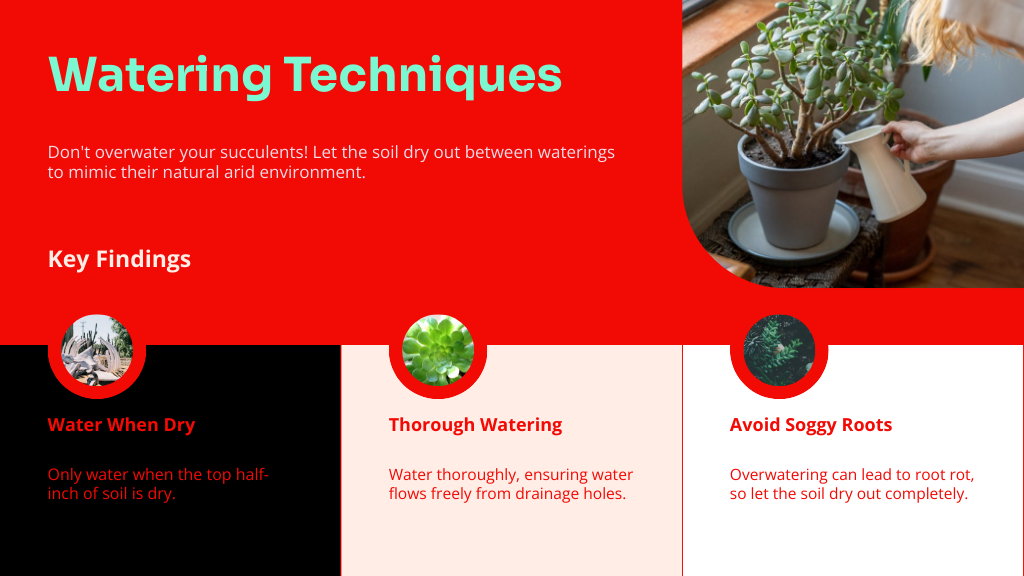
To guarantee your succulents flourish, only water when the top half-inch of soil is dry. This method guarantees you meet their watering needs without promoting conditions that could lead to root rot.
Succulents thrive on neglect It’s important to care for your succulents rather than overcare; too much water can be detrimental to popular succulents. By letting the soil dry between waterings, you mimic their natural arid environments, fostering healthy roots.
Always check moisture levels before you water your succulents, remember that indoor succulents don’t like to be overwatered. Simply stick your finger into the soil; if it’s dry, give your indoor succulents a good soak.
When you do water, do it thoroughly. Make certain water flows freely from the drainage holes at the bottom of the pot, which prevents any excess moisture from lingering around the roots. This step is vital because succulents are particularly susceptible to root rot if the soil stays wet for too long.
Selecting the Right Soil
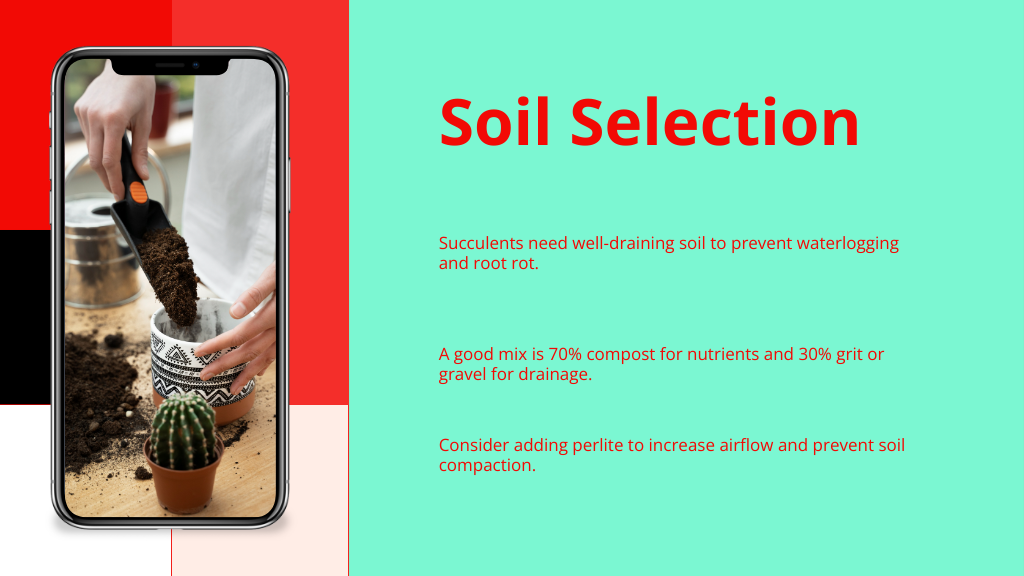
Why settle for less when you can give your succulents the best? Choosing the right soil mix is essential for meeting your succulent needs. You’ll need well-draining soil that prevents moisture from lingering too long around the roots, which can cause rot. An ideal mix contains about 70% compost for nutrients and 30% grit or fine gravel to guarantee important drainage.
To boost this drainage, consider adding perlite to your soil mix. Perlite helps increase airflow to the roots, ensuring they aren’t suffocated by compact soil. This addition is especially significant when you’re repotting.
Always opt for fresh, healthy soil during repotting to help your succulents thrive. This new environment will provide them with the necessary nutrients they need to care for succulents and improve their overall health.
Ideal Lighting Conditions

As the day progresses, guarantee your succulents get the ideal amount of water succulents require bright, indirect sunlight, ideally for 6-7 hours. Positioning them near south or east-facing windows guarantees they bask in the morning light without the harsh exposure of full sun. This setup promotes their healthy growth, keeping the vibrant colors and robust shapes you love.
You’ll want to use 70% compost mixed with potting soil can enhance the health of your succulents. to direct sunlight, especially if they’re new. Start by exposing them to full sun gradually on sunny days to prevent sun scorch, which can be detrimental. If you notice the leaves closing up, it’s a sign they’re getting too much light. Conversely, if you see them stretching out or drooping, they mightn’t be getting enough light. It’s essential to monitor the leaves regularly to assess their light needs.
For those living in less sunny areas, consider using grow lights to supplement the lack of natural sunlight. This can make a huge difference in maintaining the succulents’ health.
Temperature and Dormancy
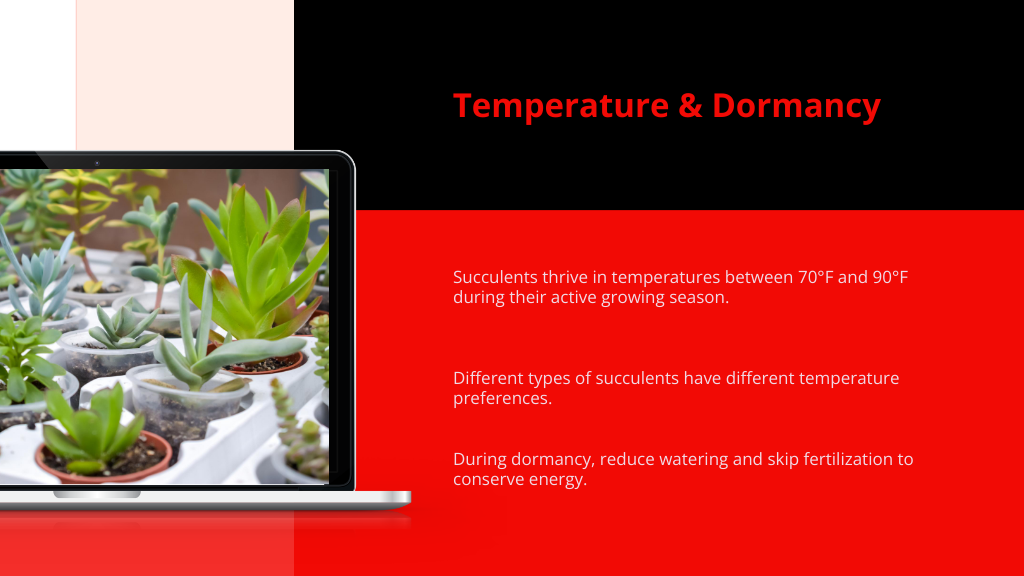
As you navigate caring for your succulents, it’s essential to keep them within the Many succulents thrive within the ideal temperature range for their specific needs. of 70-90°F. Understanding their dormancy periods during colder months is key; they’ll need far less water and no fertilizer as they conserve energy for spring. Make certain you’re not overwatering during this rest phase to avoid root rot and guarantee a healthy comeback in the growing season.
Ideal Temperature Ranges
Understanding the ideal temperature ranges for succulents is essential for their health and growth. While these sturdy plants often seem low-maintenance, ensure your succulents are kept at the right temperature for optimal growth, especially during succulents in the winter. is key to guaranteeing they thrive.
Most succulents prefer temperatures between 70°F and 90°F during their active growing seasons. This range promotes peak growth and efficient photosynthesis in succulent plants.
However, different types of succulents have varying needs:
- Leaf Succulents: These generally favor slightly cooler climates, with ideal temperatures ranging from 65°F to 85°F. They’re perfect for indoor environments where conditions can be controlled.
- Cacti: These robust plants thrive in warmer conditions, ideally between 80°F to 100°F. They can handle more direct sunlight and heat, mimicking their natural desert habitats.
- Frost-Sensitive Varieties: Most succulents need protection from cold, with temperatures below 40°F potentially causing damage or death to many succulent varieties. Confirm they’re moved indoors or to a warmer spot during chilly months.
Understanding Dormancy Periods
Most succulents love to slow their growth and enter a period of dormancy. dormancy during the colder winter months. During this time, it’s essential you adjust your care routine to keep them healthy.
Recognize the signs that your plant is shifting into dormancy: reduced leaf growth and decreased water uptake are clear indicators. This is your cue to cut back on watering and skip fertilization, as your succulents are conserving energy for survival rather than active growth.
To avoid issues like root rotTo avoid decay, which is often a result of overwatering, make sure the soil is dry before you water again, especially for succulents outdoors. Remember, excess moisture can be detrimental, especially when your plants aren’t actively growing and absorbing water efficiently.
Additionally, maintaining the right temperature is key during this dormant period. Keep your succulents in an environment where the temperature stays between 50-60°F. This range helps prevent stress that could lead to health problems.
Understanding and respecting this dormancy cycle allows you to provide the best care, ensuring your succulents come back stronger and healthier with the arrival of spring. It’s a simple but effective way to avoid common pitfalls like overwatering and to promote a healthy mother plant thriving succulent garden.
Fertilization and Pest Control
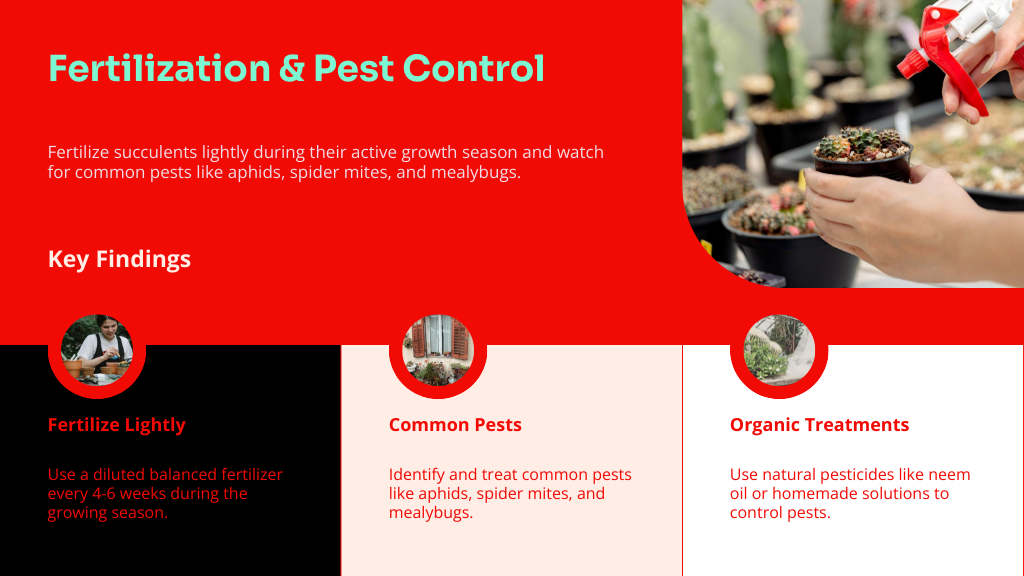
To keep your succulents thriving, you’ll want to master tips for growing succulents right temperature is crucial for the health of succulent plants during their active growth phase. It’s also essential to recognize mealybugs and aphids are common pests that can harm your succulent varieties that could threaten your plants. Implementing effective organic treatments can help you manage these issues safely and sustainably.
Optimal Fertilizer Practices
A few effective strategies can greatly enhance the health of your succulents when it comes to fertilization and pest control. Succulents require specific care, especially regarding nutrient management and dealing with potential pest issues. Being mindful of their needs during the active growth season and beyond is essential for their well-being.
Here’s what you need to know:
1. Fertilize Wisely During Growth Phases: Only fertilize your succulents during their active growth season, which typically spans from spring to fall. Use a diluted 10-10-10 liquid fertilizer every 4-6 weeks to support healthy development.
The liquid form guarantees better nutrient absorption, but remember to dilute it properly to avoid over-fertilization.
2. Suspend Fertilization in Dormancy: During the winter, when your succulents enter a dormant phase, stop fertilizing. They don’t need extra nutrients during this time, and over-fertilizing can lead to harmful build-up and encourage fungal issues.
3. Monitor Moisture Levels Closely: Maintaining ideal moisture levels is key overwatering can’t only lead to root rot but also makes your succulents more susceptible to pests.
Be vigilant and adjust your watering habits according to the season and your plant’s specific needs. Implementing these practices will help keep your succulents robust and thriving, free from pests and excessive fertilizer damage.
Identifying Common Pests
Identifying common pests early can save your succulents from significant damage. As you nurture these delightful plants, keep an eye out for aphids, spider mites, mealybugs that can infest succulent plants if not properly cared for, and fungus gnats. These critters can wreak havoc, but catching them early will keep your succulents healthy and happy.
Make it a routine to inspect your succulents for unusual signs like sticky residue, which indicates aphids, or fine webbing, a telltale sign of spider mites. Mealybugs appear as tiny white cotton patches, and fungus gnats are small flies buzzing around overly moist soil. Spotting these signs early on is essential for managing pest infestations without resorting to harsh treatments.
To prevent these pests, focus on maintaining proper moisture levels and ensuring good air circulation around your plants. Overwatering attracts fungus gnats and under-watering may stress your succulents, making them more vulnerable to other pests, especially when planting succulents.
Regular checks and balanced care are your best defense, ensuring that pest problems are caught swiftly and dealt with efficiently. Keeping these practices in mind will help preserve the liveliness and beauty of your succulent collection.
Effective Organic Treatments
Regularly providing your succulents with the right nutrients and protection against pests is vital for their health. To guarantee they thrive, consider these tips for growing succulents with organic options using products that are gentle yet effective is essential when you care for succulents.
1. Fertilization Strategy: Use a diluted liquid fertilizer, like a 13-6-6 mix, every 4-6 weeks during the active growing season. Additionally, organic options such as compost tea or fish emulsion can provide slow-release nutrients, promoting healthy growth without the risk of over-fertilization.
2. Natural Pesticide Application: For controlling pest infestations, apply neem oil, a natural pesticide that disrupts the life cycle of harmful insects while sparing beneficial ones. If you spot aphids or mealybugs, gentle treatment is necessary to ensure your succulents don’t need much intervention. homemade suffocate made of dish soap and vegetable oil mixed in water can also be effective.
3. Soil and Water ManagementMaintain ideal moisture levels and guarantee good drainage in the potting soil to prevent fungal issues. However, you should use them sparingly to avoid acidity and potential fungal growth in the potting mix.
Propagation Methods
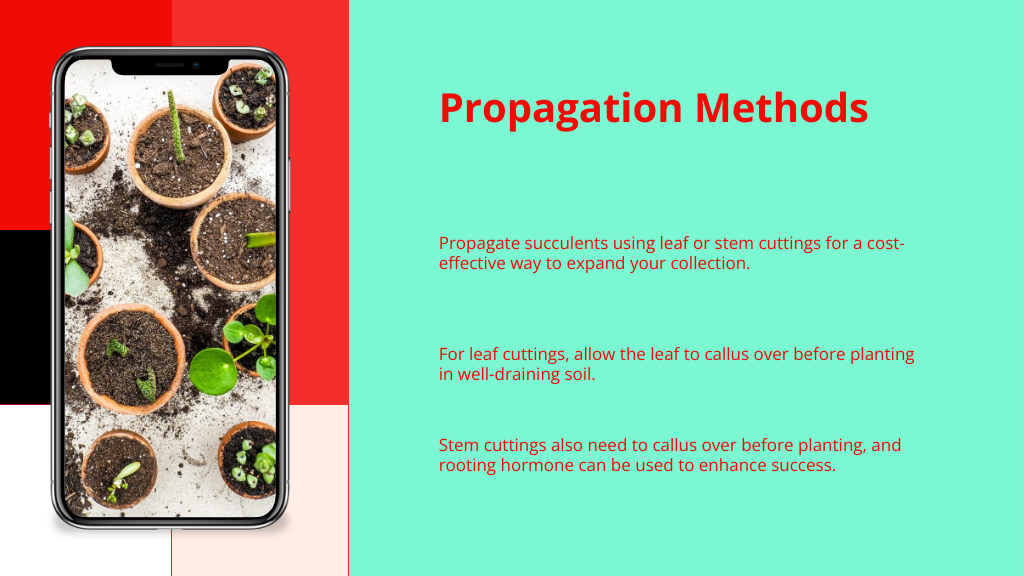
While many gardeners purchase new succulents, propagating your own can be both rewarding and economical. Propagating succulents isn’t just cost-effective; it’s a way to multiply your collection and share it with others. You can start with leaf or stem cuttings, both popular methods among enthusiasts.
For leaf cuttings, pluck a healthy leaf, let it callus over a few days, then gently place it on well-draining soil. This setup encourages robust root growth, which is essential for thriving, resilient plants.
Stem cuttings require a similar approach but start with a clean cut from a healthy succulent stem. Allow the cut end to dry and form a callus for a day or two to prevent any rot. Once ready, plant them in dry, well-draining soil. Applying a little rooting hormone to the cut surface can dramatically improve the chances of success.
Verify you maintain just enough moisture, as succulents don’t like to be waterlogged humidity around your cuttings too much water can cause decay, and too little might slow down the rooting process for your planting succulents in containers. A light mist occasionally can keep the ideal balance, helping you grow more healthy succulents from your existing plants.
Repotting Best Practices
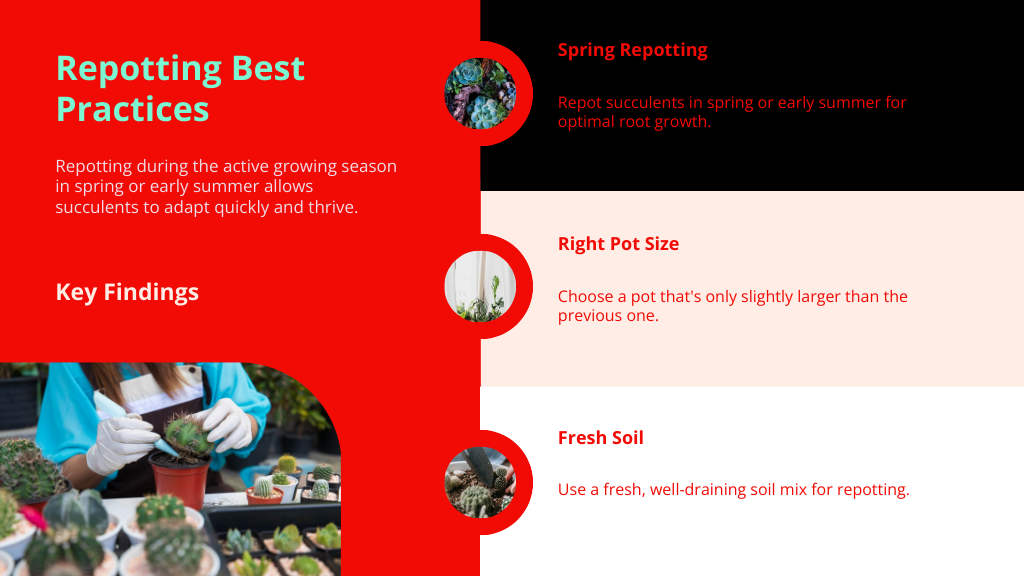
Begin repotting your succulents during their active growth phase, ideally in spring or early summer, to guarantee they quickly adapt and thrive. This timing aligns with their natural cycle and supports vigorous root growth, which is vital for their survival in arid environments.
When you’re ready to tackle repotting, keep these essential steps in mind to make sure your repotted succulent remains healthy and vibrant:
- Choose the Right Pot: Select a container only about a thumb’s width larger than the current one. This helps prevent the soil from retaining excess moisture, minimizing the risk of root rot.
- Select a Suitable Soil Mix: Use a fresh, well-draining soil mix made of about 70% compost and 30% grit or fine gravel. This composition allows excess moisture to drain away effectively, which is important for maintaining healthy growth.
- Handle with Care During Transplanting: Carefully remove your succulent from its old pot, disturbing the roots as little as possible.
After placing it in the new pot, wait a day or two before watering. This pause helps the roots recover from the transplanting process and encourages them to establish in their new environment.
Frequently Asked Questions
How Do You Grow Healthy Succulents?
To grow healthy succulents, you’ll need well-draining soil, regular watering when dry, and plenty of indirect sunlight, especially for indoor plants. Rotate them to guarantee even growth and inspect them regularly for pests. Fertilize sparingly in warmer months.
What Does Epsom Salt Do for Succulents?
Epsom salt boosts your succulents’ growth by enhancing nutrient absorption and promoting chlorophyll production in their fleshy leaves. It’s best used diluted as a monthly spray or soil soak to prevent magnesium deficiency and maintain vibrant foliage.
Do Coffee Grounds Help Succulents?
Yes, coffee grounds can help your succulents by boosting nitrogen levels and improving soil aeration. and ensure your succulent plants receive the right temperature for optimal growth.
What Is the Secret to Growing Succulents?
The secret to growing succulents lies in providing bright, indirect light, using well-draining soil, and mastering the watering technique of “drought then drench.” Regular inspections for pests also keep your plants healthy.
Conclusion
Now that you’re equipped with these seven essential tips, you’re ready to cultivate a thriving succulent garden! Remember, proper watering, the right soil, and ideal lighting are key. Pay attention to temperature changes and don’t overlook the importance of fertilization and pest management. With a bit of practice in propagation and repotting, you’ll soon have a vibrant collection of succulents. Embrace the journey, enjoy the process, and watch your green space transform with these resilient, beautiful plants.
